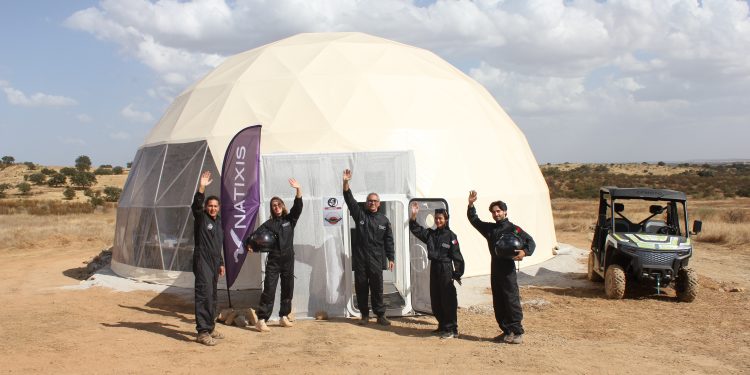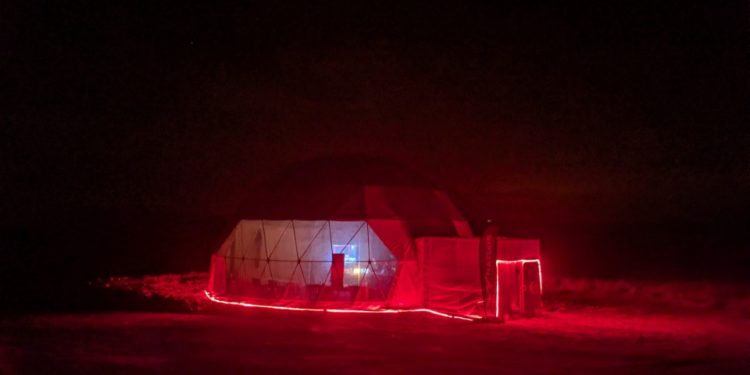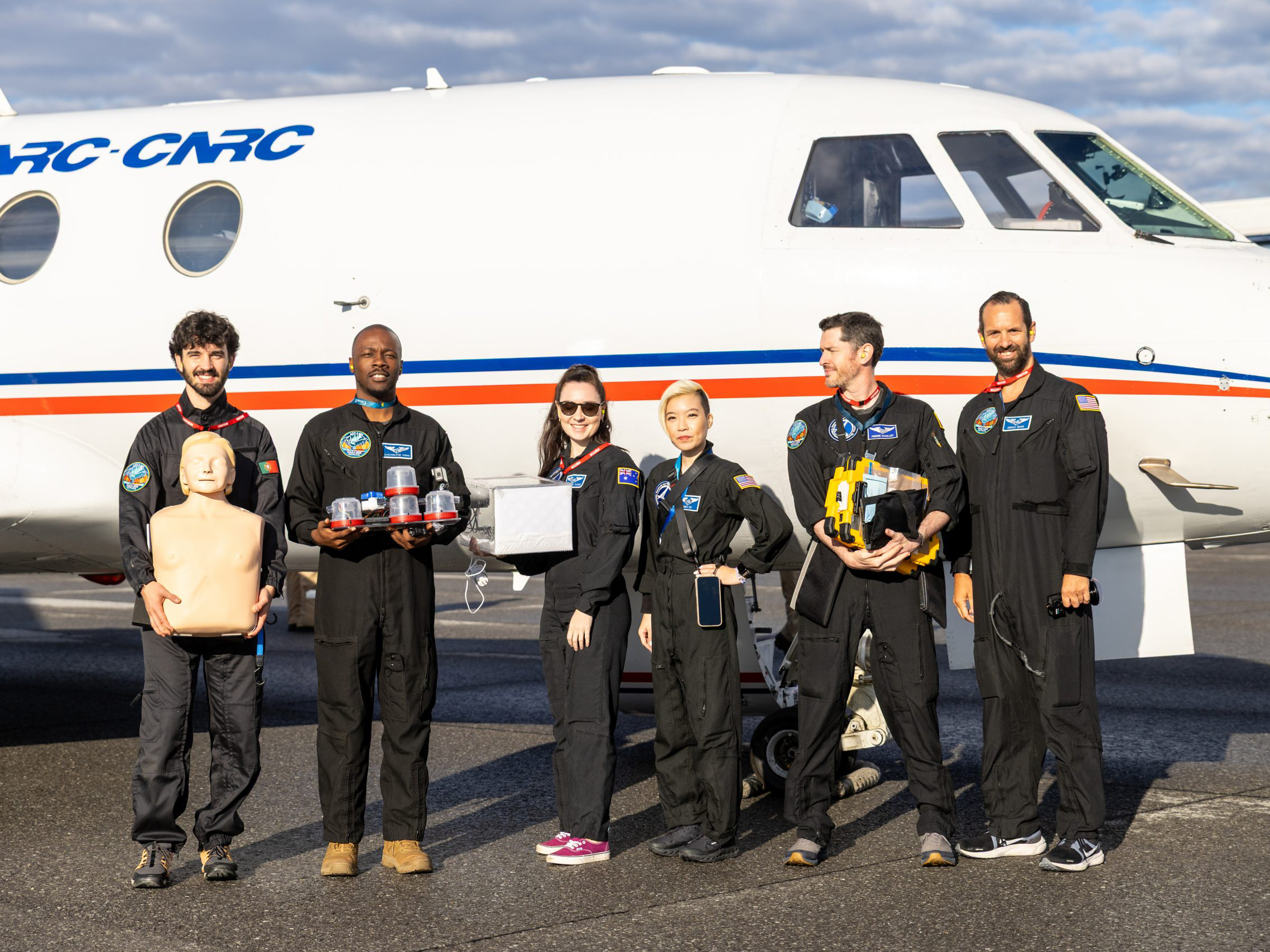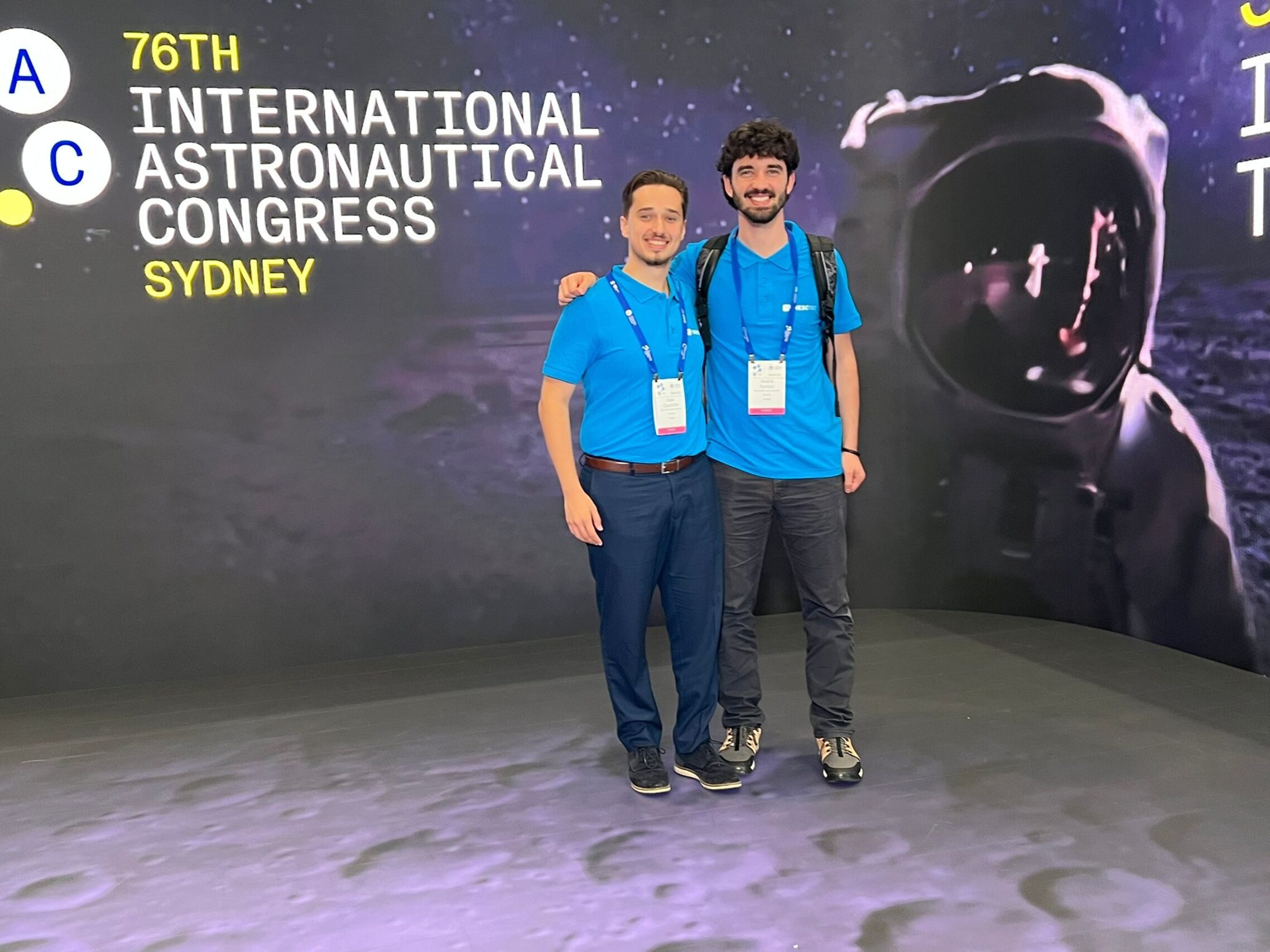I am writing these words from Mission Control, our small command post on the red dust of Monsaraz, although it genuinely feels as if I’m orbiting Mars itself. The hum of systems, the constant data streams, and the silence between communications with our crew serve as reminders that space, even when simulated, is never solely about distance. It is about perspective and about how far we can stretch the boundaries of science, technology, and human resilience when we dare to live, if only temporarily, as if we were already off this planet.
The Monsaraz Mars Analog Mission was the first analog space mission conducted within a habitat in Portugal. This milestone will remain etched in the history of science and exploration in our nation. For thirteen days, from October 13 to 25, five analog astronauts (three Portuguese and two international) lived in complete isolation inside a purpose-built habitat beside the Observatório Lago Alqueva (OLA) in the Alentejo region.
As Flight Director, I led operations from our Mission Control – a compact, meticulously designed room that served as our window to the isolated team. This role was not just logistical or scientific; it was profoundly human. Leading this mission meant balancing the discipline of systems engineering with the empathy needed to understand a crew confined, challenged, and inspired by the same dream: to make living in space possible.
This mission was part of the World’s Biggest Analog, an international network of simultaneous analog missions, united through shared data, communication, and a common purpose. For Portugal, and for INESC TEC, which spearheaded the scientific and technological efforts, the Monsaraz mission was a testament to our capabilities: a demonstration that our nation can not only contribute to but also lead complex space-analog research initiatives on a global scale.
Inside the habitat, Flight Engineer Diogo Paupério, a dedicated young researcher of INESC TEC, operated the Phobos drone, performed systems integration, and maintained the delicate balance between life support and environmental monitoring. For 13 days, he and the crew embraced the same challenges that astronauts will face on Mars. The experience also included groundbreaking studies in robotics, geomicrobiology, planetary geology, and the teleoperated extraction and quantification of DNA. This was a pioneering achievement within the World’s Biggest Analog framework and the only habitat to conduct a DNA experiment with soils.

These achievements are remarkable. However, what resonated most with me was the human aspect behind the data: the quiet determination of a team that once again demonstrated that space is not just a distant place; it is a process of becoming.
As a researcher at INESC TEC and Portugal’s first female scientist-astronaut, I have had the privilege of witnessing the evolution of our analog research. From the CAMões Mission, where I spent seven days isolated in a lava cave in the Azores simulating lunar conditions as the Commander, to the Monsaraz Mission, where we expanded our vision to a Martian environment, I have learned a vital truth that transcends national and disciplinary boundaries: we do not journey into space alone. Every mission, whether conducted in a cave or a controlled habitat, represents an ecosystem of engineers, scientists, educators, and partners working together toward a common goal.
That ecosystem has now grown even further. INESC TEC’s participation in leading global space sector events marks yet another significant step forward. For the first time, INESC TEC was represented at the prestigious International Astronautical Congress (IAC) in Sydney, Australia, where we unveiled a prototype inspired by our award-winning UX1-Neo robot. This is not simply a publicity stunt; the compact aerial robotic sphere is designed to operate autonomously in both extravehicular (EVA) and intravehicular (IVA) contexts and is set for a parabolic flight test in Canada through our partnership with the International Institute for Astronautical Sciences.
The connection between our analog mission experiences and groundbreaking robotic systems emphasizes the essential vision for human and robotic exploration. It highlights that our future beyond Earth will rarely involve humans alone—we will advance, explore, survive, and thrive alongside machines. Portugal must be prepared for this dual narrative: the human aspiration and the robotic capability. The Monsaraz mission has shown that Portugal’s scientific and technological ecosystem is ready to embrace that story.
In Mission Control, I often reflected on the theme for World Space Week 2025: “Living in Space.” These words carry both technical and existential meanings. Living in space is not just about survival or achieving engineering perfection; it is about fostering adaptability, empathy, and creativity in environments that continuously challenge our limits. The Monsaraz mission was essentially a rehearsal for humanity’s next chapter, a small, controlled step toward understanding what it truly means to establish another world as our home.
Living in space demands a different way of life here on Earth, prompting us to rethink sustainability, cooperation, and the ethics of exploration. With only three litres of water a day and the need to share silence, space, and air with four others, we learn that efficiency transcends a mere concept; it becomes a lived experience. We discover that authentic leadership is rooted in trust and coordination, rather than authority and control.

Leading this mission has been a profound privilege and an actual test of conviction. In moments when the quiet of Mission Control felt deafening and every signal delay dragged on, the fragility of our systems reflected the fragility of human endeavour. It is in these moments that we remember exploration is an act of faith, faith in our technology, our teams, and the belief that pushing boundaries brings us closer to understanding who we are.
As I reflect on this experience, surrounded by logs, telemetry, and the lingering memory of Martian dust in the Alentejo air, I feel immense gratitude. The Monsaraz Mars Analog Mission transcended a scientific exercise; it was a declaration that Portugal is ready to embrace space, not just in spirit, but through action, innovation, and courage.
Our journey to Mars and beyond begins here on Earth, fuelled by missions such as Monsaraz and systems like our compact autonomous robot, Sentinel-Orb, as we prepare for parabolic flight tests. These are bridges between imagination and reality, between simulation and survival. In leading this mission and with INESC TEC’s expertise in robotics and global research, I have witnessed the future of exploration take shape, not in distant galaxies, but in the collective spirit of those who dare to live as if space were already home.
This time, I took a step back, remaining backstage. I wasn’t in the spotlight, and I didn’t need to be. Instead, I witnessed a vibrant new generation emerging, one that was passionate about space, science, discovery, and exploration. It felt incredibly rewarding to see their enthusiasm, and within me, a profound sense of fulfilment and pride began to grow.
This time, we aimed to unite our vision with an array of inspiring partners, including NATIXIS in Portugal and Leonel Godinho, the Director of OLA, among many others. By fostering this powerful coalition and amplifying our collective impact, we can decisively propel human exploration forward in Portugal.
From my desk at the Mission Control Centre, overlooking the beautiful Alqueva, I am continually inspired by humanity’s remarkable achievements. Though we possess advanced technology and groundbreaking science, it is the strength of our human relationships that truly drives our journey into space exploration. For me, it was my MCC Aurora (Slavka Andrejkovičová), the NOVARES Crew (Florence Basubas, Rafael Rebelo, Diogo Paupério, and Nadine Duursma) led by Commander Pedro Pedroso, and the vision of so many partners involved, that made me go through the mission with hope.
By Ana Pires, Coordinator and Flight Director of the Monsaraz Mars Analog Mission and researcher at INESC TEC





 News, current topics, curiosities and so much more about INESC TEC and its community!
News, current topics, curiosities and so much more about INESC TEC and its community!